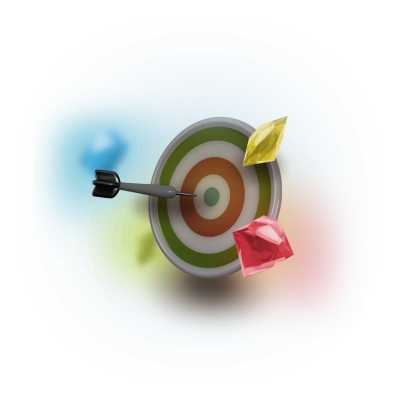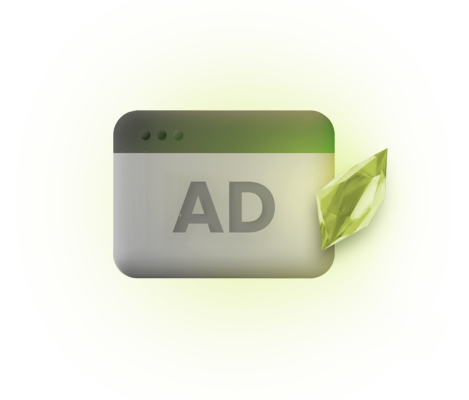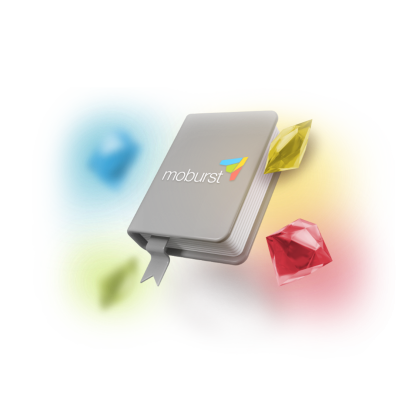
Digital marketing stands at the forefront of today’s marketing strategies, blending technology and creativity to connect with a vast online audience.
Digital marketing services encompass everything from search engine optimization (SEO) and social media campaigns to email marketing and pay-per-click (PPC) advertising. But it’s not just a set of tools; it’s a strategic approach, using advanced technologies like AI-driven personalization and data analytics to decode and influence customer preferences and behavior.
Central to the importance of digital marketing is its ability to connect with audiences where they spend a significant portion of their day.
Consider this: The average internet user spends over 6 hours online each day. During this time, this user will see around 10,000 ads per day. This impressive figure not only underscores the immense potential of digital marketing in today’s internet-centric consumer environment but also emphasizes the necessity for businesses to adopt digital marketing strategies.
Want to make sure your business stays ahead of the curve? It can be difficult to know where to start – but fret not! In this article, we’ll dive into what is digital marketing, how digital marketing works, and the types of digital marketing strategies you can employ for long-term business success. Let’s dive in.
Want to up your digital marketing game?
Moburst is a full-service digital marketing agency and we’d love to help!
How Does Digital Marketing Work?
At its core, digital marketing is about reaching potential customers through a variety of online channels, leveraging the power of the internet to achieve marketing objectives.
The Digital Marketing Ecosystem
The digital marketing ecosystem comprises various platforms such as search engines, social media, email, and websites. Each platform serves as a unique channel to engage with different segments of your audience.
For instance, SEO (Search Engine Optimization) targets users actively searching for specific products or services, while social media marketing taps into the vast user base of platforms like Facebook and Instagram for broader brand exposure.
Data-Driven Strategies
The use of data analytics is central to how digital marketing works. By analyzing data from website traffic, social media interactions, and other online engagements, digital marketers gain insights into consumer behavior and preferences.
This data-driven approach allows for the creation of targeted and personalized marketing campaigns, significantly increasing the likelihood of reaching the right audience with the right message at the right time.

Integrated Marketing Approach
An effective digital marketing strategy is not just about using multiple channels; it’s about integrating these channels to work in harmony. SEO, content marketing, email marketing, and social media strategies should complement each other, creating a unified message that resonates across all platforms.
This integration can help you maintain consistency in terms of communication, reinforcing brand messaging, and driving better engagement.
Measuring Success and Adaptability
The beauty of digital marketing lies in its measurability and adaptability. Tools and metrics such as click-through rates, engagement rates, and conversion rates provide real-time feedback on the performance of marketing campaigns.
By continuously measuring performance and behavioral insights, brands can optimize and adjust their marketing strategies to stay ahead of the competition and connect with a wide audience.
Benefits of Digital Marketing
Now that we’ve covered how digital marketing works, it’s time to delve into why it’s essential.
Digital marketing isn’t just another strategy; it’s an incredibly valuable tool for engaging and converting customers. It opens up a range of benefits, from enhancing brand awareness to generating leads and fostering strong customer relationships. It also helps in optimizing budget allocation and giving your brand a competitive edge.
Up next, we’ll explore each of these advantages, illustrating how digital marketing can expand your reach and maximize efficiency in a cost-effective manner.
Reach Target Audiences Effectively
One of the most beneficial aspects of digital marketing is that it allows you to reach your target audiences effectively. Through the use of SEO techniques such as keyword research and content optimization, you can ensure that your website appears higher up on search engine results pages when potential customers are searching for your services or products.
Additionally, through PPC advertising campaigns on social media platforms like Facebook and Instagram, you can target specific demographic groups (based on age, location, gender, etc.) with laser-focused messaging. This type of targeted advertising helps to ensure that the right people see your adverts and potentially become customers.

- Generally, digital marketing has the power to reach wider audiences that are more relevant to your brand than traditional marketing because you can launch campaigns far and wide across the Internet with tighter controls. The tighter controls and access to data enable you to ensure the effectiveness of your efforts, which is harder to achieve with traditional marketing.
Track Campaigns in Real Time
Another key benefit of digital marketing is its ability to track campaigns in real-time. With advanced analytics tools such as Google Analytics or Adobe Analytics, you can gain insights into how your website visitors are responding to your content and optimize your strategies as needed. They will inform you of which campaigns are successful and which ones need adjusting in order to increase key KPIs.
For example, a company may notice that a certain type of advertisement is more effective at driving sales than another type, so they could focus more resources on creating additional ads that fit that style or look for areas where optimization is necessary.
Additionally, tracking your website visitors’ behavior helps you collect data about user trends and preferences that you can use to inform future campaign strategies.
Save Money
Utilizing digital marketing can be much more cost-effective than investing in traditional marketing methods like print ads or television commercials. This is because you’re eliminating expensive production costs associated with creating physical media materials such as flyers or billboards. The hyper-targeting options available with digital marketing also mean less money is wasted on marketing to the wrong audiences (or audiences that are too wide) and will therefore save you money in the long run.
Instead of investing heavily in these types of materials upfront, you can instead focus more resources on creating engaging content for your target audience online at a fraction of the cost – and reach thousands of potential customers.
What’s more, by using multiple channels for digital campaigns – including email marketing, search engine optimization (SEO), pay-per-click (PPC) advertising, and social media marketing – you are able to get your message out much faster than before.
Improve Conversion Rate and Lead Generation
One of digital marketing’s most useful features is how it can help improve conversion rates and lead generation. It does this in multiple ways, but one such way is by leveraging the power of targeted advertising. As we’ve established, through targeted campaigns, you can reach the right audiences with relevant messaging that resonates with them.

By creating content that provides value to and engages your target audience as a brand you can increase your visibility, establish credibility and trust, and build relationships with potential customers. All of these increase the likelihood of conversions and help to nurture leads.
Engage Consumers Along the Funnel
Digital marketing goes beyond mere reach and conversions to engaging consumers along the entire marketing funnel. With tools such as personalized marketing, website SEO, email campaigns, retargeting strategies, and more, you can engage potential customers at each stage of their journey.
Website personalization allows companies to provide unique experiences for visitors based on their preferences and past interactions with the website. This creates a more personalized customer journey that is tailored to their specific interests and needs, increasing engagement while also aiding in conversions. This is just one example of how digital marketing engages customers along the entire marketing funnel.
Increase Brand Awareness
We live in a digital-first world. Almost everything can be done and is done online. It’s more than likely that the majority of your target customers will be browsing the internet on a daily basis, either consuming content, communicating with friends, shopping, working, or searching for answers to their queries.
There is so much opportunity for your brand to show up in those spaces and increase brand awareness. Potential consumers are already hanging out there, so part of the hard work is done for you.
Appearing in ads on social media or search engine results pages, showing up organically on the first page of the search engine results pages, producing innovative and engaging content on social media, pushing personalized messages directly into people’s inboxes, perfecting your own website…the possibilities are endless for making sure your brand is instantly recognizable and remains front and center of consumers’ minds!
Adapt Quickly to Changing Trends
The digital world is constantly evolving. On the one hand, it can be difficult to keep up, let alone stay ahead of the curve. On the other hand, digital marketing is the perfect vessel for marketing in a fast-paced landscape because campaigns can be paused, cut, adapted, or transformed on an incredibly quick timeline.
- Paid ads can be launched or paused almost instantaneously, for example. If there’s a particular update in your industry or pop culture event that inspires a fresh take on content, you can put updates and content out there on social media in one simple tap.
Want to make the most out of your marketing budget?
Our team of digital marketing experts is here to help!
Types of Digital Marketing
Digital marketing is an ever-growing and developing field that can be used to achieve a variety of goals. There are a number of different types of digital marketing available, including email marketing, search engine optimization (SEO), pay-per-click (PPC) advertising, social media marketing, content marketing, and influencer marketing, to name just a few.
By utilizing each of these, you can create a well-rounded digital marketing strategy that will maximize your presence online and increase brand awareness and loyalty among customers over time as well.
Search Engine Optimization (SEO)
Starting with one of the cornerstones of digital marketing, Search Engine Optimization (SEO) is the process of optimizing a website to achieve higher rankings within organic search engine results. A higher ranking means your website is more visible to a relevant audience – the people who use search engines to look for the product, service, or content you’re offering. This makes your optimized website appear closer to the top of your audience’s organic search results, therefore increasing the likelihood they’ll click on it.

A strong SEO marketing strategy will include a range of practices, like continuous optimization of top-quality content that can bring great value to your users and increase their trust in your brand and identifying long-tail keywords or questions that your users include when they search for the product or service that you offer.
Email Marketing
Email marketing is another form of digital marketing that involves using email to send personalized messages to customers in order to engage them, promote products or services, build loyalty, educate, and ultimately lead to more conversions.
When it comes to email marketing, the goal is typically to create newsletters and other emails that contain relevant content for your target audience. This could include product information, special offers or discounts, tips or advice related to their interests and your niche, as well as links back to your brand’s website.
In addition to creating a personalized customer experience for each individual user – as you can set up audience segmentation based on different triggers, interests, or demographics such as location – you can also use various tools such as email automation software or A/B testing in order to optimize your campaigns for maximum engagement and conversion rates.

Unlike traditional methods of advertising, such as television commercials or billboards that reach large audiences but may not be targeted at any particular demographic group, email marketing allows businesses to precisely target specific users with tailored messages based on their interests and needs. By taking advantage of this, you can ensure that every customer receives content that suits them best and speaks directly to them as an individual.
Email marketing allows you to track its performance in real time, so you can measure how effective a campaign has been in terms of engagement, lead generation, and conversions. This helps you better understand which campaigns are successful and which need further optimization in order to increase efficiency and ROI from your efforts.
Conversion Rate Optimization (CRO)
Conversion Rate Optimization (CRO) is a process of optimizing websites and online marketing campaigns to maximize the number of website visitors that convert into paying customers. It involves analyzing user behavior, understanding their needs and motivations, testing different tactics and strategies, and measuring the effectiveness of each in order to drive conversions. CRO is a key component of any digital marketing strategy as it helps businesses understand what works and what doesn’t when it comes to earning conversions.
Instead of focusing on increased exposure like many other marketing methods, CRO focuses on what to do with that exposure to increase conversions.
The conversion rate is the percentage of users who take an action that moves them from A to B in the user journey, so contrary to popular belief, it doesn’t only represent sales.

With Web CRO, you can increase your website’s conversion rates by optimizing its content, structure, design, and code in order to make it more appealing to potential customers.
- This includes optimizing page titles and descriptions for higher visibility within search engine results pages (SERPs), creating compelling headlines, using A/B testing to optimize call-to-action buttons or form fields, improving site navigation elements such as menus or links, ensuring fast loading times across all devices, and providing clear information on product or service offerings.
- All of these tactics help improve the user experience while also increasing the chances that visitors will convert into customers.
As a business, it’s also worth utilizing various tools such as heatmaps or surveys in order to gain valuable insights about customer behavior and preferences. The information can then be used to optimize campaigns further.
- Heatmaps are visual representations that show where users click on a page, such as buttons or images, while surveys allow you to ask customers questions about their experience on your site directly. These tools are incredibly powerful for pinpointing areas for improvement in order to optimize CRO efforts even further.
You can also use retargeting ads based on customer data gathered from previous visits in order to re-engage users who have shown interest in their products or services but not yet converted into paying customers. This helps maximize ROI from advertising efforts while also providing an additional touchpoint with potential customers which may lead them closer to making a purchase decision over time.
Content Marketing
Content marketing is an integral part of any digital marketing strategy, serving as a pillar for attracting, engaging, and retaining customers. The ultimate goal is to create captivating content that resonates with your audience by understanding their needs, motivations, and behaviors.
This tailored experience can take various forms, such as blogs, podcasts, videos, or infographics, and can be distributed across different channels like social media or email campaigns. By utilizing content marketing, you’ll not only enhance brand recognition but also gain valuable insights into customer preferences. Leveraging personalized experiences will maximize your ROI, reaching ideal customers with targeted messages that drive conversions.
PPC Advertising
Is your business struggling to reach the right customers effectively? The challenge is real, especially in the realm of digital marketing. Traditional advertising methods like TV or radio spots can be costly and often fall short of targeting ideal customers. Meanwhile, achieving desired results through organic SEO efforts can be a lengthy process. So, what’s the solution?
Pay-per-click (PPC) advertising is an effective way to quickly reach your target audience online while also being able to track performance metrics as you go. PPC ads appear on search engine result pages (SERPs), social media platforms, and other websites that partner with advertisers – all of which allow you to set a budget and only pay when someone clicks on your ad.
This makes it easier for businesses of any size or budget to get started with digital advertising without having to worry about large upfront costs.
Unlike more traditional forms of advertising, PPC campaigns allow businesses to target specific demographics, interests, and locations in order to create a tailored experience for the customer. Additionally, these ads can be quick to set-up and are easy to modify, providing the option to test different versions in order to increase relevance and effectiveness over time.
When it comes to PPC campaigns, you can access valuable analytics such as impression shares, cost per click, conversion rates and more. These insights can be used to further segment potential customers and tailor content based on what resonates with them.
Social Media Marketing
Social media marketing is a type of digital marketing strategy designed to promote brands and services through various social media channels and platforms such as Facebook, Twitter, Instagram, YouTube, TikTok, LinkedIn and more. It involves creating engaging content that is tailored to each platform’s unique user base in order to build relationships with potential customers and increase brand awareness.
Social media marketing offers you the opportunity to actively engage with your target audience by responding to comments and messages, publishing timely updates and content, providing value, joining relevant conversations, and much more. This helps to build trust with potential customers while also providing beneficial insights into what works best for each specific social channel.

By using paid promotion, targeted ads, and sponsored posts, you can further optimize your social media campaigns. Paid promotion allows you to increase your content’s visibility by targeting an even larger audience than just the people who already follow you. Targeted ads give you the ability to hone in on specific demographics based on location, age group, or interests (among other factors), thus helping ensure you’re reaching the most relevant audience for your brand and messaging.
Influencer Marketing
Influencer marketing is an increasingly popular form of digital marketing that involves using influencers as part of your marketing strategy to promote your product, service, or brand. Through these relationships, influencers can help spread your brand’s message to their large and engaged audiences, thus helping you reach more potential customers.
There are numerous ways of executing influencer marketing, such as gifting products to influencers in the hopes that they will feature them in their content, sponsoring their social media posts or videos, signing ambassador deals with them, and more.
The key to successful influencer marketing lies in finding the right people to work with who have authentic connections with their followers and are able to create content that resonates with their audience. Not only this, their audience needs to overlap with your target consumers. If an influencer recommends your product to their followers, their followers will likely trust the recommendation more than a traditional ad.
Influencers can be celebrities, athletes, industry experts, or everyday people who have made a name for themselves in the digital landscape – such as bloggers, vloggers, and social media personalities. All influencers will have strong reach among specific audiences, but particularly macro and mega influencers. Macro influencers have between 100,000 and one million followers, while mega influencers have over one million followers. That’s a lot of people you could be exposing your brand to.
In addition to increased visibility, brand awareness, and authenticity, influencer marketing gives you important glimpses into customer preferences. You can see how much engagement each sponsored post receives, with various engagement metrics such as likes and comments. This data can then be used to ensure the success of future content in order to maximize influencer marketing campaigns’ ROI.
How to Measure the Success of Your Digital Marketing Campaigns
It’s clear by now that digital marketing campaigns are great for engaging with customers, increasing visibility, and creating brand awareness. To keep on top of all of those elements, it’s important to track the success of your digital marketing campaigns. However, this can be a daunting task. With a few simple steps, it doesn’t have to be an intimidating endeavor.
A good place to start is by looking at the reach – how many people have seen or interacted with your campaign, ads, website, landing page, or social media profile? Then, you can dive into how often customers took action after being exposed to or visiting them. An action could include signing up for email newsletters, downloading content, liking or commenting on content, or even making a purchase. This is often referred to as the response rate, and will give valuable insights into how well-executed your digital marketing efforts are.

After that, you could measure conversions – what percentage of your traffic resulted in a sale? This can help to determine which channels were more effective than others. By building on these metrics, you can continuously refine your digital marketing strategies and make sure you are getting the most out of your campaigns.
Another way to measure your digital marketing campaigns is by gaining insights on audience demographics through analytics platforms. This is useful for gauging engagement and ROI.
One final tip is to make sure you compare metrics over time and validate whether they are improving or decreasing – you don’t want to find yourself in a situation where all your hard work elicits no results.
Want to up your digital marketing game?
Moburst is a full-service digital marketing agency and we’d love to help!
Key Takeaways
Digital marketing is an essential tool for businesses of all sizes to reach their target audiences. By understanding the key components of digital marketing and using effective strategies, you can successfully reach your customers and grow your business.
Consider combining a variety of strategies and consult with an expert digital marketing agency for the most successful results – a combination of paid and organic strategies, such as PPC advertising and SEO, will do wonders in generating conversions and general brand awareness. With some trial and error, you should be able to find what works best for your business.






